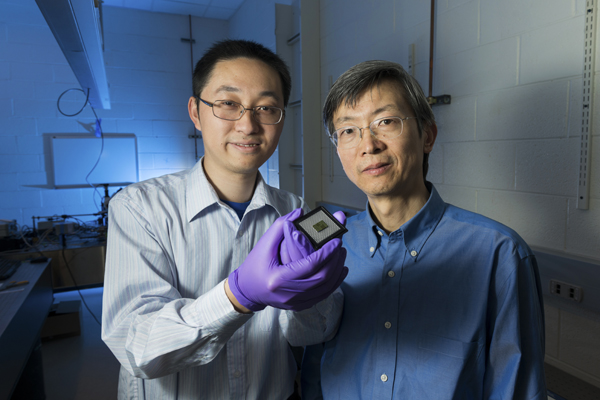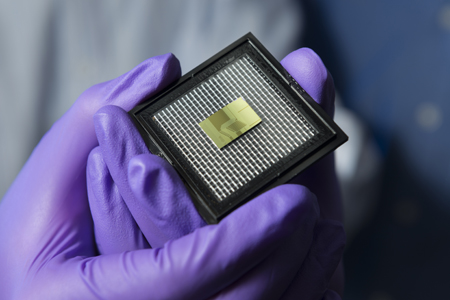Tiny Sensor Promises Better Monitor for Environment

This Behind the Scenes article was provided to LiveScience in partnership with the National Science Foundation.
Researchers are developing a device that they hope will allow real-time, onsite detection of water and air pollutants in an inexpensive and environmentally friendly manner.
Professors Juejun Hu and Chaoying Ni of the University of Delaware's Department of Materials Science and Engineering are creating small, highly sensitive devices that will be able to detect organic, inorganic and biological molecules at low levels in the environment. They are funded by a seed grant from the National Science Foundation's Delaware Experimental Program to Stimulate Competitive Research.
"We're making nanostructures to detect chemical molecules in a very sensitive manner," said lead researcher Hu.
With further research and development, the devices could be integrated into portable, battery-powered sensor packages, replacing more traditional molecular detectors, which require bulky and expensive equipment. Deployed in a network in the field, an array of the small sensors could detect contamination in air, water and soil in real time and relay that information wirelessly to a computer.
A major obstacle preventing small sensors from becoming practical replacements for bulky machines is that the new technology is less sensitive and specific in its detection than the instruments currently in use. Hu and Ni's project aims to create sensors that overcome these obstacles.
"It's a new type of sensor," said Ni. "It is very small and, more importantly, it is very sensitive and very specific."
Sign up for the Live Science daily newsletter now
Get the world’s most fascinating discoveries delivered straight to your inbox.
The researchers use a focused ion beam to punch holes into a thin strip of chalcogenide glass — glass composed of particular elements that give it special optical propertiesneeded to track pollutants and enhanced by the holes — that is a few micrometers thick, or about one-tenth the width of a hair. When light passes through the strip, molecules in the environment selectively absorb one or a few particular colors of the light — in this way, the molecules are, in effect, signaling their presence. The researchers can use these optical absorption signals to identify the presence and concentration of molecules of interest. The researchers plan to group several of the tiny, chip-sized devices together to create a sensor capable of detecting multiple types of molecules.

"In the end, the device will be very sensitive compared to current technology. We expect around two to four orders of magnitude improvement," said Hu. "It will also be small and leave a very small footprint. Once integrated, it will be the size of a hockey puck and can be placed discreetly in the environment."
Since the researchers began the project about a year ago, they have successfully created several chips, although they have encountered some problems along the way.
"Fabricating the device was difficult," said Ni. "The holes have to be punched with great precision. That's why we need the focused ion beam, which turned out to be perfect for this project."
Although the project is still in its early stages, with testing only having started this past fall, Hu is already looking ahead to the practical benefits the devices could have for the environment.
"We'll be able to continuously monitor environmental pollutants, so we'll know if water in a stream is getting polluted or if a chemical plant is leaking. We can also use it to detect toxic leaks in industrial plants," he said.
Hu added that once the technology is sensitive enough, chip-scale sensors could be useful in other fields, including biomedicine.
"We could use the devices to check for certain diseases by analyzing a patient's breath," he said. "The sensor would be able to detect trace molecules in the air they exhale."
Ni agreed that the devices could have a significant impact. "They could be a game-changing type of thing," he said.
Editor's Note: The researchers depicted in Behind the Scenes articles have been supported by the National Science Foundation, the federal agency charged with funding basic research and education across all fields of science and engineering. Any opinions, findings, and conclusions or recommendations expressed in this material are those of the author and do not necessarily reflect the views of the National Science Foundation. See the Behind the Scenes Archive.
NASA rover discovers out-of-place 'Skull' on Mars, and scientists are baffled
A long-lost Antarctic ice sheet could predict the future of New York City — one in which Lower Manhattan and Coney Island are 'perpetually submerged'
Watch boozing chimps share alcoholic fruit. Is this how social drinking started?










